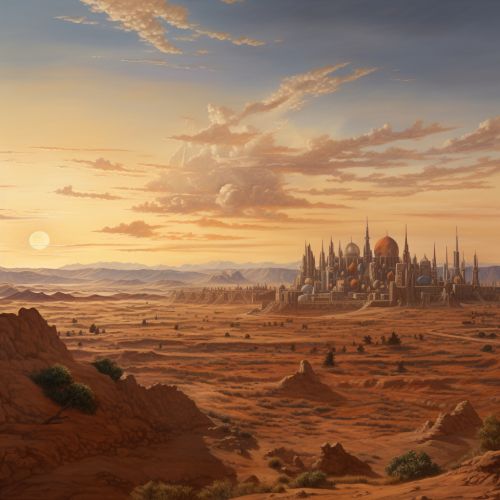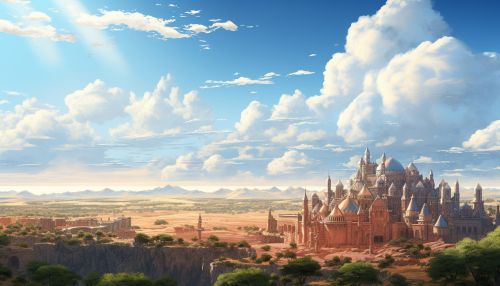Saudi Arabia
Geography
Saudi Arabia, officially known as the Kingdom of Saudi Arabia, is a country located in the Arabian Peninsula in Western Asia. It is the largest country in the Middle East, covering approximately 2,149,690 square kilometers. The country is bordered by Jordan and Iraq to the north, Kuwait to the northeast, Qatar, Bahrain, and the United Arab Emirates to the east, Oman to the southeast, and Yemen to the south. It is also connected to Sudan and Eritrea via the Red Sea and to Iran via the Persian Gulf.


The country's topography is dominated by the Arabian Desert and semi-desert, with several highlands and mountain ranges. The Asir region, located in the southwest, is notable for its high mountains and greenery due to the annual monsoon from the Indian Ocean, which makes it the country's most fertile region. The Rub' al Khali, the largest continuous sand desert in the world, covers the southern third of the country.
History
The history of Saudi Arabia dates back to the time of the earliest civilizations in the Arabian Peninsula. The Dilmun civilization, one of the oldest trading centers in the world, was located in the eastern part of the peninsula. The region was later part of the empires of the Persians, Romans, and Byzantines. The birth of Islam in the 7th century and the subsequent Islamic conquests dramatically changed the socio-cultural and political landscape of the Arabian Peninsula.
In the 18th century, the first Saudi state was founded by Muhammad bin Saud, in alliance with the religious leader Muhammad bin Abd al-Wahhab, marking the beginning of the Saudi-Wahhabi alliance, the basis of the modern Kingdom of Saudi Arabia. The current borders of the country were established in the early 20th century by Ibn Saud, who unified the various tribes and regions into one nation.
Politics and Government
Saudi Arabia is an absolute monarchy, with the King serving as both the head of state and the head of government. The King's powers include the ability to issue royal decrees, appoint or dismiss ministers, and propose laws. The Basic Law serves as the country's constitution and outlines the government's responsibilities and powers.
The country's legal system is based on Sharia, with the Quran and the Sunnah (the teachings and practices of the Islamic prophet Muhammad) serving as the country's constitution. The judiciary is independent, with the Supreme Court being the highest court in the land.
Economy
Saudi Arabia has one of the largest economies in the Middle East, largely due to its vast reserves of petroleum. The country is the world's largest exporter of petroleum and has the second-largest proven petroleum reserves. The petroleum sector accounts for approximately 90% of budget revenues, 90% of export earnings, and 55% of GDP.
In recent years, the government has embarked on an ambitious plan, known as Saudi Vision 2030, to diversify the economy and reduce its dependence on oil. The plan includes measures to develop public service sectors such as health, education, infrastructure, recreation, and tourism.
Culture
Saudi Arabian culture is a rich blend of Islamic traditions and Bedouin customs. The country is known for its hospitality and the importance it places on family and tribal affiliations. Arabic poetry, music, and dance play a significant role in cultural life.
The country is also home to two of Islam's holiest cities, Mecca and Medina, making it a central hub for Islamic tourism. Every year, millions of Muslims travel to Saudi Arabia to take part in the Hajj pilgrimage, one of the Five Pillars of Islam.
See Also
Geography of Saudi Arabia History of Saudi Arabia Economy of Saudi Arabia Culture of Saudi Arabia Politics of Saudi Arabia
